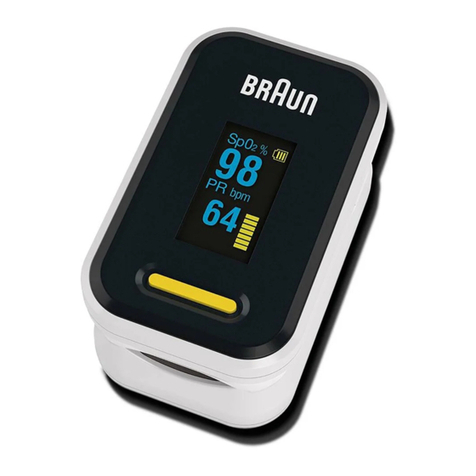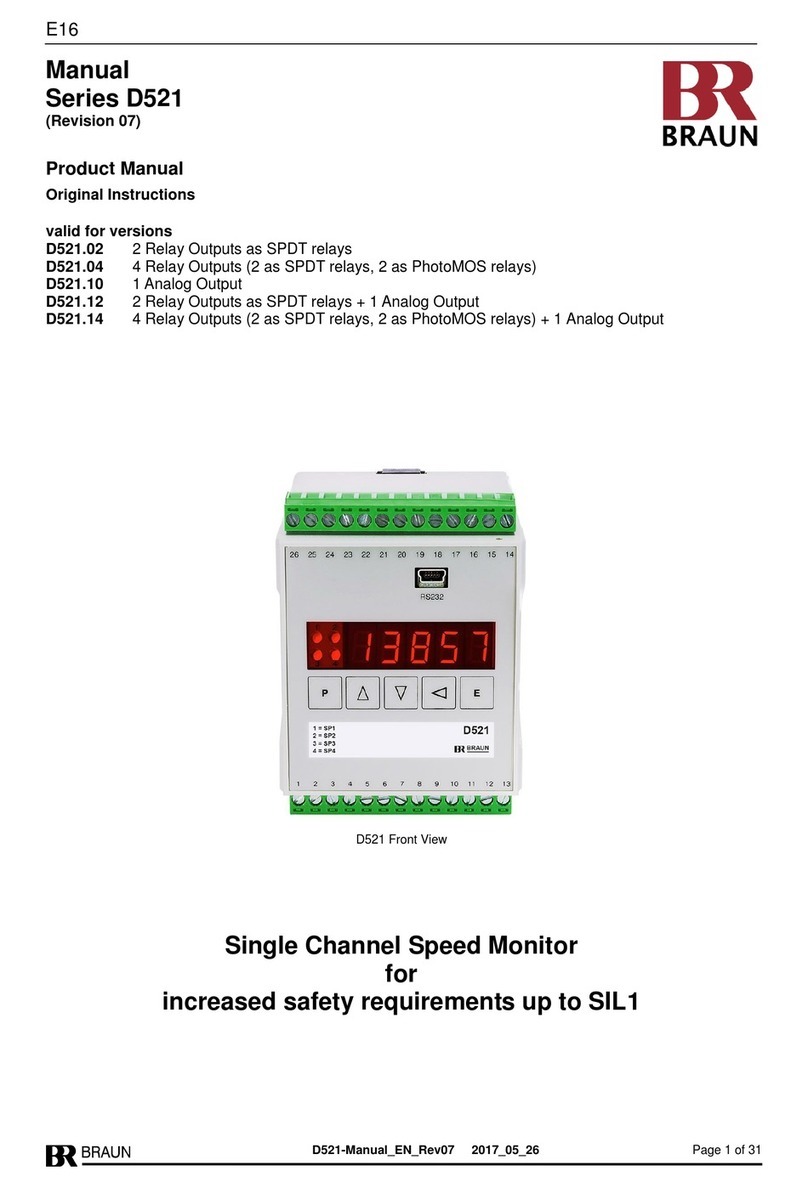Manual C118 EN Rev04 04.2017 6
Sensors and Cables fitting the C118
Application Characteristics Part No.
Optoelectronic Sensor as standard, 95 mm shaft
(part of equipment C118BS, C118.1BS, C118.2BS and
C118.3BS).
A1S30P95 *
same, with short shaft 35 mm. A1S30P35 *
Optosensor, with increased light intensity, with 5m
cable firmly attached (part of C118.2BP and C118.3BP).
A1S36P95-5m
same, with short shaft 35 mm, and angularly
attached cable, for narrow space applications.
A1S36WP35-5m
Laser type sensor for scanning distance up to 2 m,
target to be marked with high reflection tape U1A006.
A1S37P *
Sensing wheel, twin type, wheel 63 mm,
1000 pulses/meter for length detection,
Speed measuring range 0… 1200 m/min.
A1L04B200 **
Sensing wheel, twin type, wheel 159 mm,
1000 pulses/meter for length detection,
Speed measuring range 0… 3000 m/min.
A1L05B500-5V **
Speed sensor on differential Hall-effect basis, detecting
steel profiles, or magnets, at any speed, under tough con-
ditions, under oil or water.
A5S07B50-2mP **
Speed sensors on magnetic-inductive (active) basis,
to detect varying external magnetic fields. Specials for
speed measurement of turbochargers on ships.
Sensor series
A2S… ***
*) connection cable type SAK
(in standard equipment with 2 meters length)
**) connection cable type L3A25BP
***) connection cable type L2A16BP
All cables available with length of 2 m, 5 m, 10 m.
Notes to sensor selection and how to mark the target
Optoelectronic type sensors
There is hardly another type of sensors fitting better to var-
ying applications as the non-contact optoelectronic versions
do. The target is fast and easily prepared. The automatic
signal conditioning, incorporated with the C118, accepts a
line of paint, a hole, or a screw, or a blade as a mark.
Important however, that it has a strong contrast to the back-
ground. An excellent means is a piece of the high reflection
strip (U1A006) taped on the target.
The target itself may be any sized part (a wheel, shaft or
disk, for instance), made of any material, metal or plastics.
Since there is no reaction to the object under measurement,
this may be a small and light part, also running at high
speed. The only requirement is to keep the spot of meas-
urement clean.
For the mark, a length of 1 cm in direction of run (even less
at smaller shafts) will be adequate. A crooked surface (fan
or turbine blade) will best be marked by a piece of the high
reflection tape (U1A006).
If several marks are used (to get a faster reaction at a slow
motion), they should be placed with equal distances be-
tween them.
The acceptable scanning distance (clearance) widely de-
pends on the contrast of the mark. In general, it will be 0.5
to 2 cm, more with the high reflection mark applied. With
this as pre-condition, the Laser type sensor A1S37P may
achieve up to 2 meters.
The sensor A1S36P95 has been designed for heavy ambient
conditions, at paper machines (felts), for instance. The
firmly attached cable protects against humidity or steam,
and its especially intensive light may overcome a faint
marking contrast.
Oscillating light as emitted from AC-supplied illumination
may pretend a speed to the instrument (50 Hz =3000 RPM),
even if reflected somewhere. This may cause irritations,
and the sensor should be protected against.
A1S30P95,
the standard for
optoelectronic
sensing
A1S37P,
the sensor for
large distance
A1S36P95,
the sensor for
humid ambiance,
and with en-
hanced light
It is important to hold the sensor steadily (in reference to
the target). Mostly, a support to the hand will be adequate.
Critical applications (low speed, narrow clearance) may re-
quire a firm clamping of the sensor. The magneto-based ad-
justable clamp U9A001 will be a practical aid, specifically
to the Laser type sensor A1S37P.
Magneto-based
sensor clamp
U9A001





























